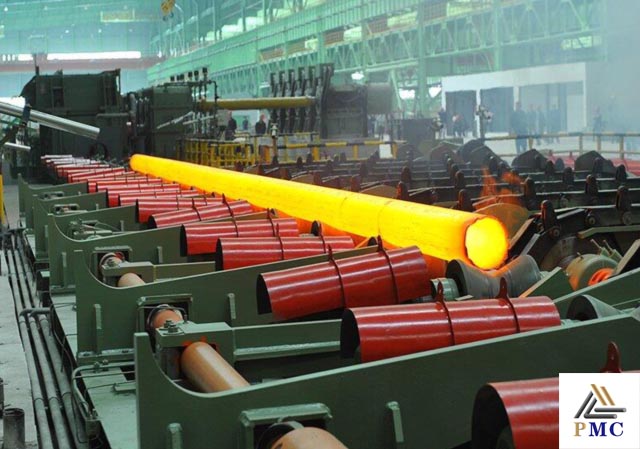
Several Quenching Methods Commonly Used for Seamless Pipes
1) Single medium quenching
The workpiece is cooled in a medium, such as water quenching, oil quenching. The advantages are simple operation, easy mechanization and wide application. The downside is that it's just a cooling rate.
2) Dual medium quenching
The seamless pipe is first cooled to about 300 degrees Celsius in a medium with a strong cooling capacity, and then cooled in a medium with a weak cooling capacity, such as water quenching first and then oil quenching, which can effectively reduce the internal stress of martensite transformation and reduce The tendency of seamless pipes to deform and crack can be used for quenching seamless pipes with complex shapes and uneven cross-sections. The disadvantage of dual-medium quenching is that it is difficult to grasp the moment of dual-medium conversion. If the conversion is too early, it is easy to quench hard, and if the conversion is too late, it is easy to quench and crack. In order to overcome this shortcoming, a graded quenching method has been developed.

3) Graded quenching
The seamless pipe is quenched in a low-temperature salt bath or alkali bath furnace. The temperature of the salt bath or alkali bath is near the Ms point. After staying at this temperature for 2min-5min, take it out for air cooling. This cooling method is called graded quenching. The purpose of staged cooling is to make the internal and external temperature of the workpiece more uniform, and at the same time carry out martensitic transformation, which can greatly reduce the quenching stress and prevent deformation and cracking. The classification temperature used to be set slightly higher than the Ms point, and after the temperature inside and outside the seamless pipe was uniform, it entered the martensitic zone. It is now improved to a temperature classification just below the Ms point. Practice shows that the effect of grading below the Ms point is better. For example, high-carbon steel molds are quenched step by step in an alkali bath at 160 degrees Celsius, which can be hardened and deformed small, so it is widely used.
4) Austempering
The seamless pipe is quenched in an isothermal salt bath. The temperature of the salt bath is at the lower part of the bainite (slightly higher than Ms). The seamless pipe stays isothermally for a long time until the bainite transformation is completed, and then it is taken out and air-cooled. Austempering is used for steels above medium carbon to obtain lower bainite to improve strength, hardness, toughness and wear resistance. Low carbon steel generally does not use austempering.
Tips: ASTM A53 covers seamless and welded steel pipe with nominal wall thickness. The surface condition is usually black and hot-dipped galvanized. ASTM A53 is produced mainly for pressure and mechanical applications, and is also used for transport of steam, water, gas line pipes. ASTM A53 Grade B is more popular than other grades.
Go here to learn more about "Seamless Steel Pipe Manufacturing Process"


